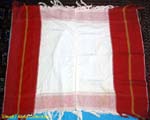 |
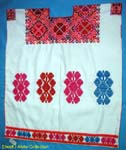 |
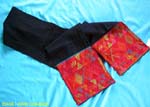 |
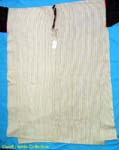 |
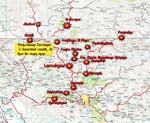 |
|||
| San Pablo Chalchihuitan is a remote and isolated community. We didn´t know it existed until we saw a good, new paved road heading off of the Chenalho-Pantelho road with a large sign that read "Chalchihuitan". We drove along a valley for several kms; then the road began to wind up the side of a mountain. We seemed to go round and round through pine forests until we began to spot some structures. Most of these turned out to be burned and abandoned. We began to get the feeling that maybe going to Chalchihuitan wasn´t such a good idea. When we finally began to see houses and people, we got a major surprise. All the girls and women were wearing white, knee length huipils. This is very unusual in highland Chiapas. As far as we knew, only women in the Tzeltal communities of Oxchuc and Cancuc wore long huipils. Some huipiles were plain, but others were covered with big, brightly-colored designs in cross-stitching. We continued on up to the small plaza, but found some sort of political meeting in progress. All the men we saw were dressed in traditional clothing. We decided this wasn´t a good time to visit and drove back to San Cristobal. We returned to Chalchihuitan several days later. There was no sign of a weaving coop. We parked the car and went into a tienda to see if they had any textiles to sell. Inside, two teenaged girls sat embroidering a huipil. We asked if they knew anyone selling huipiles and they said, “no.” We walked to another tienda and asked about textiles. The pleasant folks there directed us back to the first store. We wandered around for a little bit, not wanted to return to the sullen teenagers. Finally, a young taxi driver came up to us and asked how he could help us. We told him that we were looking for someone who might have traditional clothing for sale. He knew just the person himself. He took us to his house near the plaza and had us wait in the small "sala" full of benches where he showed videotapes ("action" flicks are the local favorite) to paying customers. |
|
Home - The Collection - Favorite Photos- Bob's Top 10 - Textile Patterns - The Villages - Participate
For more information or comments please contact me at: info@mexicantextiles.com © 2005 Bob Freund All Rights Reserved |